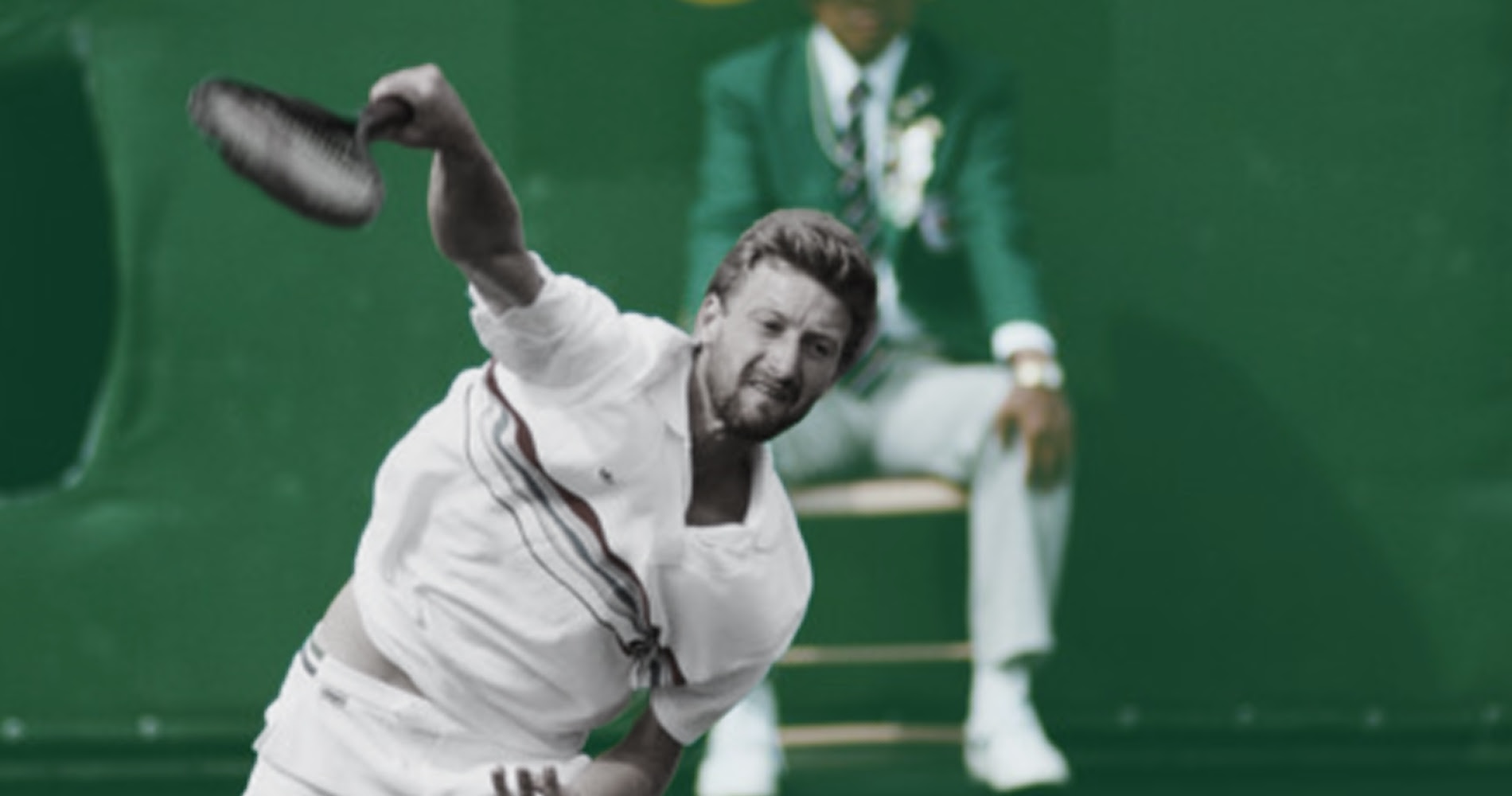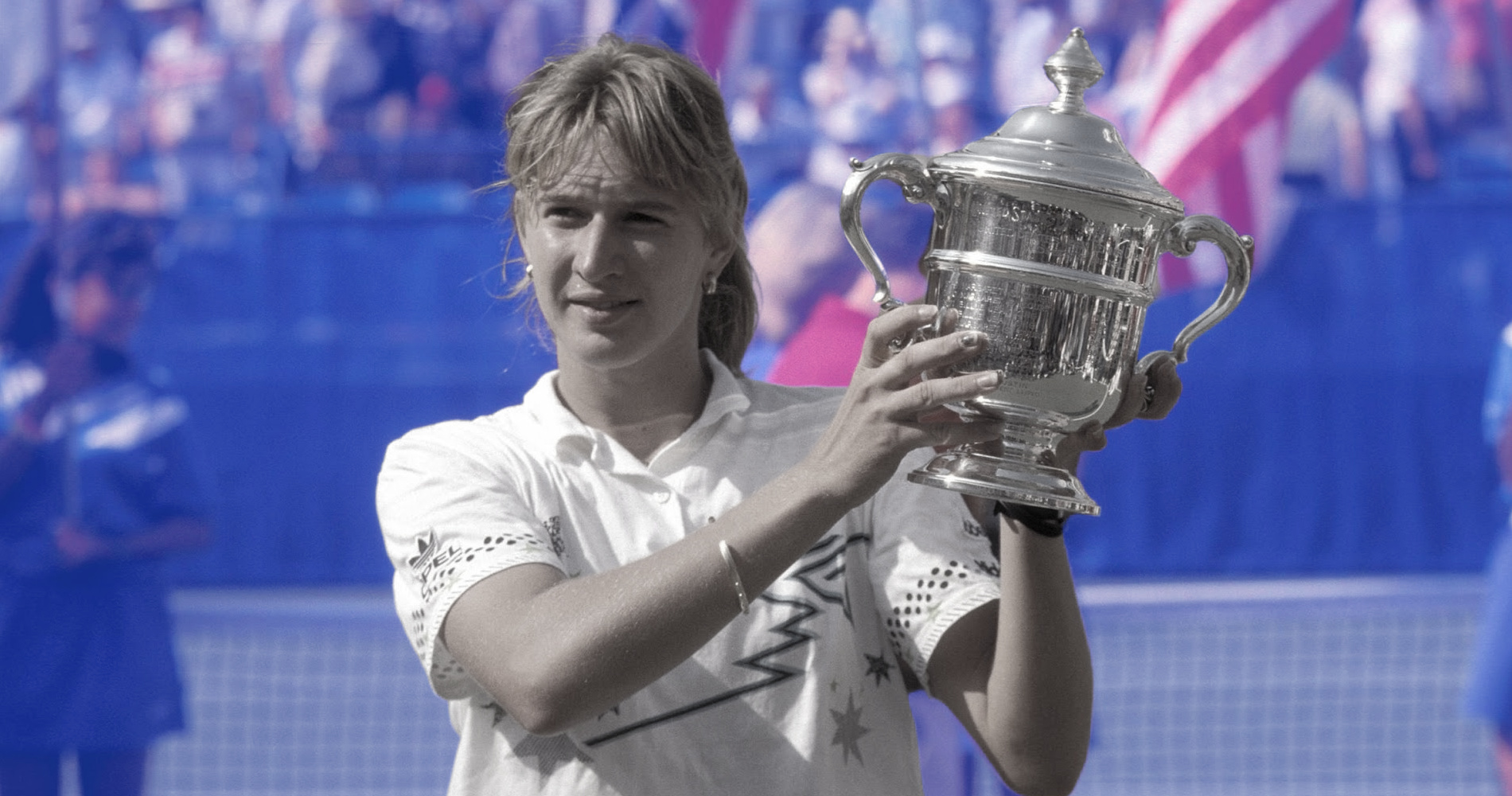October 1, 1988: The day Steffi Graf won the “Golden Grand Slam”
On October 1, 1988, Steffi Graf added an Olympic Gold to her calendar Grand Slam to accomplish something no one had ever done before or has done since

What exactly happened on that day?
On this day, October 1, 1988, Steffi Graf defeated Gabriela Sabatini in the singles final of the Olympic tournament in Seoul (6-3, 6-3). Three weeks after completing the calendar-year Grand Slam, the German added a gold medal to make her season even greater. This feat would remain as a “Golden Slam”, an expression that was specifically invented to define this unique achievement and would make Graf’s 1988 season the greatest ever played in tennis.
The players involved: Steffi Graf and Gabriela Sabatini
- Steffi Graf: The Undisputed Golden Girl of women’s tennis
Steffi Graf was born in 1969 in Germany. In 1982, at the age of 13, she became the youngest player to ever get a WTA ranking. After winning the demonstration event held at the 1984 Los Angeles Olympics, she constantly improved her game and her results. At the age of 16, she reached the semi-final at the 1985 US Open, defeated by world No 1 Martina Navratilova (6-2, 6-3).
In 1986, she claimed her first WTA title in Hilton Head, before getting to the US Open semi-final a second time. Closely overseen by father, Peter Graf, the German had her breakthrough year in 1987, when she lifted her first Grand Slam title, edging Navratilova in the final of Roland-Garros, and finishing runner-up, also to Navratilova at Wimbledon and the US Open.

On August 17, she took over the top WTA ranking from the American, who held it with little interruption since 1982. Graf started 1988 by beating Chris Evert (6-1, 7-6) to win the Australian Open, and in June, she triumphed at Roland-Garros as well, punishing Natasha Zvereva (6-0, 6-0) in the shortest Grand Slam final in tennis history.
After the Wimbledon final, where she beat six-time defending champion Navratilova (5-7, 6-2, 6-1), Graf had established a heavy domination on the tour, and at the US Open, she wrote a new page of tennis history, beating Gabriela Sabatini in the final (6-3, 3-6, 6-1) to achieve the first calendar-year Grand Slam since 1970.
- Gabriela Sabatini: The only player to beat Graf so far in 1988
Gabriela Sabatini, from Argentina, was born in 1970. Successful at a very young age, in 1985, she became the youngest player to reach the semi-final at Roland-Garros, where she was defeated by Chris Evert (6-4, 6-1). In the following years, Sabatini, displaying a beautiful one-handed backhand, firmly entrenched herself in the top 10, reaching the semi-final at Wimbledon in 1986 (lost 6-2, 6-2 to Martina Navratilova), and two more times at the French Open in 1987 and 1988, each time defeated by Graf.
She also claimed eight titles on the tour, the most important one in Boca Raton in 1988, where she was the first player to beat Graf that year (2-6, 6-3, 6-1). Just before the US Open, she triumphed in Montreal, defeating Natasha Zvereva in the final (6-2, 6-1), and in New York, she finished runner-up to Graf (6-3, 3-6, 6-1).

The place: Seoul Olympic Park Tennis Center
Seoul Olympic Park Tennis Center is a tennis venue in Seoul, South Korea, located in the Olympic Park. The Olympics were a novelty in the world of professional tennis, as the sport was absent from the Games since 1924. On May 11, 1987, the IOC had decided the inclusion of tennis in Seoul. The stakes were higher than just tennis : by including all tennis players, the IOC would officially acknowledge for the first time the end of amateurism.
The facts: Graf wins in straight sets
At the start of the 1988 Olympic Games, Steffi Graf was the logical and the overwhelming favourite, as long as she had recovered from her US Open campaign, having triumphed in New York only 10 days before the start of the Seoul tournament. In fact, after her victory in New York, the German didn’t even take time to celebrate, flying back home as soon as possible.
”I came here really tired,” Graf said, according to The New York Times. ”I was not expecting too much of myself.”
However, her form improved as the tournament progressed and, in the semi-finals, she played great tennis to crush world No 8 Zina Garrison 6-0, 6-2. In the final, she faced Sabatini – the only player who had managed to beat Graf in 1988. But with the German winning their most recent encounter in the US Open final, she was once again full of confidence.
It’s something not many people after me will achieve. It’s amazing.
Steffi Graf on her unqiue achievement
Sabatini got off to the better start. After she missed three break points in the first game, the Argentine managed to break her opponent’s serve at 2-2. Unfortunately, she was unable to keep her own serve, and eventually, Graf took the lead, and sealed the first set 6-3 with an ace. After the two young women split the first four games of the second set, the German broke Sabatini’s serve again.
‘I felt I would win after the fifth game of the second set,” Graf said. ”But I actually had a very good feeling after the first game of the match. I was liking the way I am playing.”
The world No 1 also won the second set 6-3 to complete the victory. She had just achieved a very unique feat in tennis history, which would have not even been possible in the past, as tennis had been excluded from the Olympics for 64 years, and has not been replicated since.
”I’m very excited,” she said. ”It’s something not many people after me will achieve. It’s amazing.”
What next? Graf ends career with 22 Grand Slam titles
Steffi Graf would continue to hold the top spot on the WTA rankings until she was later supplanted by Monica Seles in 1991. After Seles’ stabbing in 1993, Graf would regain the top spot and hold on to it for most of the time until 1997, setting a new record of 377 weeks spent as world No 1.
By winning the 1995 US Open, she would become the only player of all time to win each of the four Grand Slam titles at least four times. When she would retire in 1999, soon after claiming her last major title at Roland-Garros, she had won an incredible total of 22 Grand Slam tournaments.
Sabatini would climb as high as world No 3 in 1989. That year, she would lose to Graf in the semi-finals at both the Australian Open and US Open. In 1990, at Flushing Meadows, she would eventually beat the German (6-2, 7-6) to claim the first and only Grand Slam title of her career.
In 1991, she would play a last Grand Slam final (losing once again to Graf, 6-4, 3-6, 8-6), and would remain a top 10 player until 1995, reaching the semi-finals in Grand Slam tournaments on seven more occasions. In 1996, struggling with motivation, Sabatini would play only 10 tournaments and would eventually retire at the end of the season.















